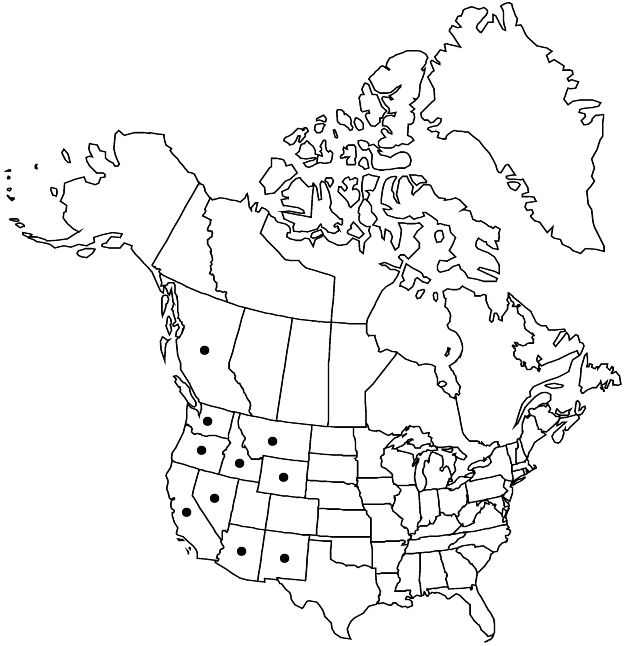Poteridium occidentale
in N. L. Britton et al., N. Amer. Fl. 22: 388. 1908.
Common names: Western burnet
Endemic
Basionym: Sanguisorba occidentalis Nuttall in J. Torrey and A. Gray, Fl. N. Amer. 1: 429. 1840
Treatment appears in FNA Volume 9. Treatment on page 320.
Revision as of 13:14, 30 July 2020 by imported>Volume Importer
Plants winter-annual, glabrous; taproots 3–10 dm. Stamens 2 (or 4). Fruits: hypanthia ridges rounded, thickened; sepals not thickened proximally.
Phenology: Flowering May–Jul; fruiting Jun–Aug.
Habitat: Prairies, sandy open ground, sagebrush flats, vernal pools, drawdown shorelines of streams and lakes, grassy clearings, roadsides, particularly with surficial or subterranean moisture
Elevation: 10–2100 m
Distribution

B.C., Ariz., Calif., Idaho, Mont., Nev., N.Mex., Oreg., Wash., Wyo.
Discussion
The taxonomic status of Poteridium occidentale has been controversial. Most floristicians of the twentieth century accepted it as distinct from the more eastern P. annuum (usually treating the two in Sanguisorba); but in recent decades a trend developed to merge the two taxa. While superficially similar, they seem to represent independent evolutionary lineages, as indicated by morphologic distinctions and allopatric distributions.
Selected References
None.
Lower Taxa
None.
"thin" is not a number.
... more about "Poteridium occidentale"
perigynous +
dehiscent +
herbaceous +
coriaceous +
absent +
absent +
glabrous +
Western burnet +
aggregated +
absent +
glabrous +
aggregated +
glabrous +
globose +
fascicles +
Prairies, sandy open ground, sagebrush flats, vernal pools, drawdown shorelines of streams and lakes, grassy clearings, roadsides, particularly with surficial or subterranean moisture +
rounded +
thickened +
armed +
persistent +
glabrous +
enlarged +
hardened +
12-100+-flowered +
crassinucellate +
compound +
alternate +
deciduous +
simple +
persistent +
adnate +
pinnatisect +
scarious +
absent +
aggregated +
apical +
absent +
absent +
perigynous +
absent +
absent +
1;250 +
in N. L. Britton et al., N. Amer. Fl. +
1908 +
not arillate +
2;1 +
persistent +
ovate +
thickened +
Endemic +
equal +
branched +
pubescent;glabrous +
capitate +
pinnate +
persistent +
adnate +
absent +
branched +
brushlike +
deciduous +
distinct +
terminal +
not elongate +
Poteridium occidentale +
Poteridium +
species +
developed +
absent +
inconspicuous +
taprooted +
winter-annual +
glabrous +